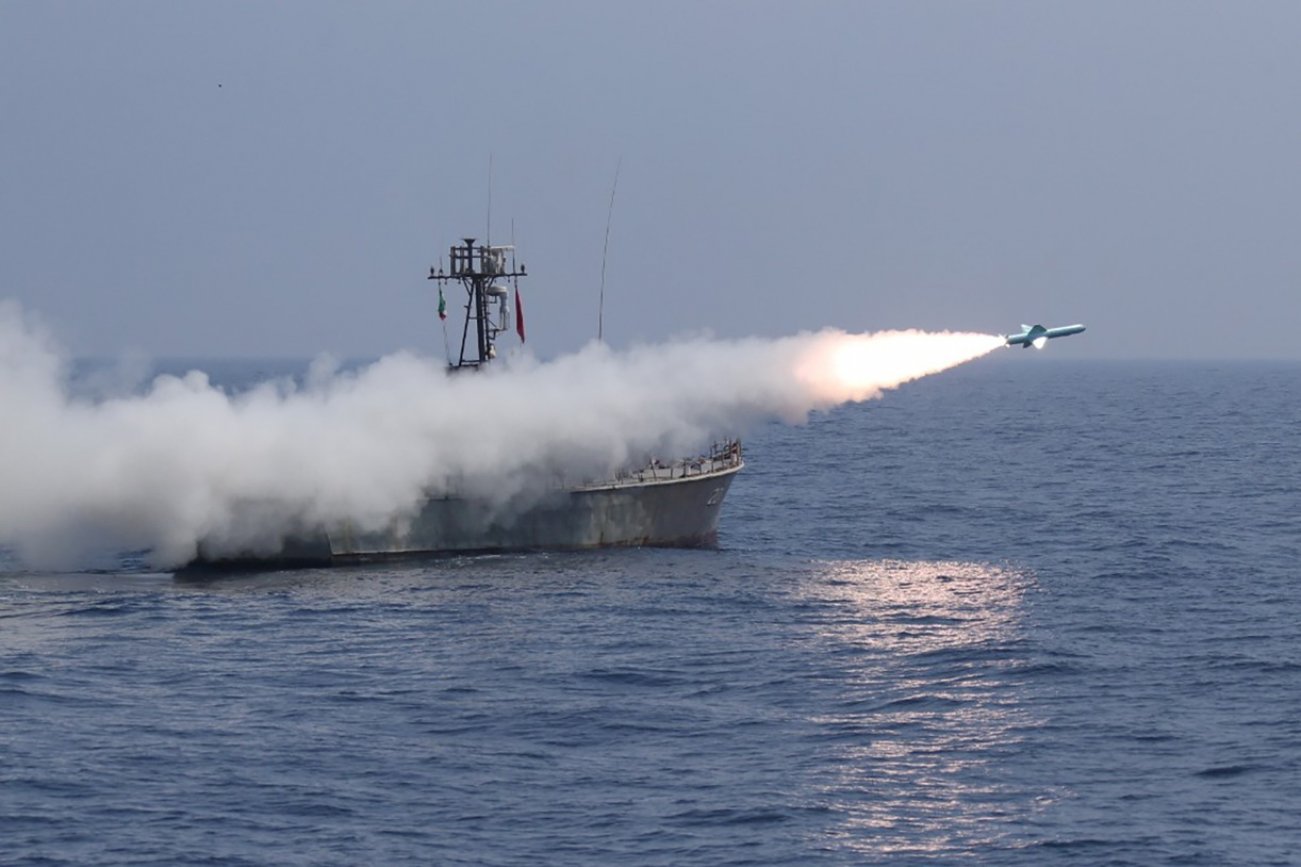Kyle Mizokami
Aircraft Carriers,

Here's What You Need to Remember: In the event of an attack, Iran would likely launch every missile it could possibly throw at a carrier strike group, ideally scores or even hundreds of missiles. Even missiles that have no reasonable chance of striking a moving warship, the vast majority of the missile force, would be launched in order to overwhelm the carrier’s defenders with threats.
Iran has invested considerable resources in its ballistic missile forces over the past forty years, for the same reason China and North Korea did: military aviation is an expensive proposition, and developing and maintaining an air force to rival the United States is very expensive indeed. Ballistic missiles offer a relatively inexpensive way to launch conventional, chemical, biological, and even nuclear payloads long distances. As an added bonus intercepting such missiles is complex and itself an expensive undertaking. All three countries developed large ballistic missile arsenals of varying sophistication, occasionally trading in illicit information among themselves and others.
Iran, as The National Interest pointed out last month, has a large and varied ballistic missile arsenal. It is difficult to pin down with certainty Iran’s capabilities, as information inside the country is tightly controlled and the government often exaggerates or is evasive regarding its military capabilities. For the purposes of this article, we’ll assume that Iran possesses the missiles as described by The National Interest, such as missiles with infra-red seekers for terminal guidance (Fateh Mobin) and an anti-ship ballistic missile with a 434-mile range. Iran would need such a capability to even consider hitting ships at sea.
Perhaps just as important as having ballistic missiles is the “kill chain” of intelligence, surveillance, and reconnaissance (ISR) assets required to keep constant tabs on a U.S. Navy battle group, allowing Iran’s missileers to launch their missiles with the most current targeting information available. U.S. Navy aircraft carriers and their escorts can steam at speeds of up to 35 knots, making information even just an hour old useless for targeting purposes.
Experts reckon that China will have a similar requirement for persistent ISR across the vastness of the Pacific, but Iran will have a considerably easier task. The Islamic Republic’s southern borders run the length of the Persian Gulf and the Gulf of Oman, a coastline longer than that of California, Oregon, and Washington combined, and both are less than three hundred miles wide at their widest. Even a country like Iran, lacking sophisticated reconnaissance assets, would find it easy to keep track of something as large as a carrier battle group. Military assets including outdated military aircraft and helicopters, the many small boats and ships of the Iranian Revolutionary Guards, Iranian intelligence agents, and regime-friendly civilian vessels could keep track of a fleet of U.S. ships relatively easily.
Iran would likely want to pull an American carrier battle group as close to the Iran coastline as possible. This would allow the country to disperse its fleet of ballistic missiles across a wider area and farther inland, giving them a better chance of escaping detection before launch. U.S. reconnaissance assets such as JSTARS, the RQ-4 Global Hawk, and others can peer into Iran without entering Iranian territory, making detection of missile movements possible without entering Iranian airspace. As Iranian missiles gain in range and sophistication, such missiles could be deployed deeper within the country’s interior where they are more difficult to detect. It is worth keeping in mind Iran is a large country of approximately 636,000 square miles, making it larger than California, Nevada, Oregon, Washington, and Utah combined.
In the event of an attack, Iran would likely launch every missile it could possibly throw at a carrier strike group, ideally scores or even hundreds of missiles. Even missiles that have no reasonable chance of striking a moving warship, the vast majority of the missile force, would be launched in order to overwhelm the carrier’s defenders with threats. Iran, which pioneered the use of small boats armed with rocket-propelled grenades, heavy machine guns, and artillery rockets during the Iran-Iraq War, has long been a fan of overwhelming enemy forces with obsolete or ineffective weapons to conserve combat power. A missile attack would likely be no different.
An alert carrier battle group’s defenses, directed by a guided missile cruiser armed with the Aegis Combat System, would likely take out most of the incoming missiles. Shorter-range ballistic missiles launched from the coastline would be engaged with SM-6 air defense missiles, and the more common Standard SM-2 Block IV has a limited anti-ballistic capability. It might be necessary to use SM-3 ballistic missile interceptors against longer-range Iranian missiles. Most Iranian missiles would miss, having never had a reasonable chance of hitting, contributing best as a means of confusing the enemy.
Could a lucky Iranian missile actually sink an American carrier? It’s unlikely. The missiles with the best chances of hitting, short-range missiles with terminal guidance like the Fateh Mobin, have the smallest warheads and move at the slowest speeds. Such a missile would have to carry a nuclear warhead to pose a mortal threat to a 100,000-ton warship, and Iran lacks the fissile material and expertise to build such a warhead. A smaller target, such as a destroyer, would be more vulnerable but also more difficult to hit.
Even under ideal circumstances, Iran’s missile arsenal is unlikely to pose a credible threat against the U.S. Navy. That having been said, Iran can be expected to continue to develop longer-range missiles with greater throw weights and improved accuracy. The time may come when the Pentagon, out of an abundance of caution, might decline to send carriers beyond the Gulf of Oman--but that time is not now.
This first appeared several years ago.
Image: Reuters